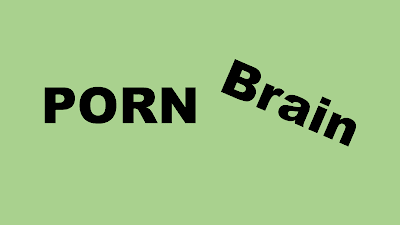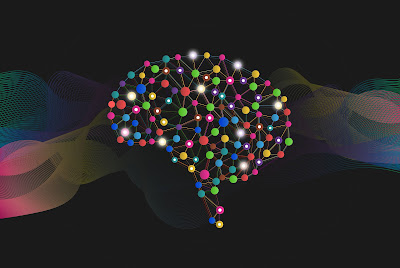The Impact of Pornography on Brain Health: Insights from Neuroscience
The Impact of Pornography on Brain Health: Insights from Neuroscience
In the digital era, pornography has become easily accessible, concealed within the devices carried by millions of individuals through smartphones and computers. While discussions around pornography often revolve around moral, ethical, and societal aspects, it is crucial to comprehend its potential impact on brain health. Today, we will explore the intersection of pornography and neuroscience, shedding light on how explicit content may affect the brain from a neuroscience perspective.
Neurological Processes When Viewing Pornography
When an individual engages with sexually explicit material, intricate processes unfold within the brain. Studies have revealed that the brain's response to pornography is comparable to that of other rewarding stimuli, such as drugs or food (Mechelmans et al., 2014; Voon et al., 2014). Watching porn triggers various events in the brain that also explain how an individual can become addicted to porn.
1. Dopamine Release and Activation of the Reward Pathway
Engaging in pleasurable activities, including watching pornography, activates the brain's reward pathway, primarily through the release of dopamine. Dopamine is a neurotransmitter associated with pleasure and reinforcement. Over time, repeated exposure to pornography can lead to desensitization, where more explicit or novel content is required to achieve the same level of arousal, similar to how drug addiction leads to tolerance (Love et al., 2015).
2. Neuroplasticity and Conditioning
Frequent exposure to pornography can induce neuroplastic changes in the brain. Neuroplasticity refers to the brain's ability to reorganize and form new connections based on experience. Repeated exposure to pornographic material reinforces neural pathways associated with sexual arousal, leading to a conditioned response where specific cues or stimuli trigger the desire to consume pornography (Kühn & Gallinat, 2014; Voon et al., 2014).
3.Hyperstimulation, Sensitization, Cue Reactivity, and Cravings
The highly stimulating and novel nature of pornography can induce a state of hyperstimulation, resulting in an overactivation of the brain's reward system. Sensitization can also occur, where the brain becomes hypersensitive to pornographic cues. As associations between cues (such as explicit sexual images or pornographic websites) and the rewarding experience of pornography strengthen in the brain, these cues can trigger intense cravings and a compulsion to engage in the addictive behavior (Seok & Sohn, 2015).
Consequences of Excessive Pornography Consumption
1. Tolerance
Over time, individuals may develop a tolerance to the same level of sexual content, necessitating exposure to more explicit material to achieve the desired level of arousal. This parallels the concept of tolerance observed in substance addiction, where larger doses are required to attain the desired effect (Love et al., 2015).
2. Desensitization
Prolonged exposure to pornography can desensitize the brain's reward system, leading to a diminished response to natural rewards and an increased dependence on explicit content for stimulation. This desensitization may interfere with an individual's ability to experience pleasure from non-pornographic sources (Love et al., 2015).
3. Impacts on Relationships and Intimacy
Excessive consumption of pornography can also have consequences for relationships and intimacy. Research suggests that frequent pornography use is associated with sexual dissatisfaction and a greater preference for porn-like sex (Miller et al., 2019). Exposure to idealized and unrealistic sexual scenarios depicted in pornography can create unrealistic expectations, leading to disappointment and dissatisfaction within intimate partnerships.
4.Potential Adverse Psychological Effects
Although the influence of pornography on mental well-being is still debated, certain studies indicate potential negative psychological consequences. Research has identified a correlation between pornography consumption and diminished mental health, reduced overall life satisfaction and self-esteem in adults, as well as an increased prevalence of depressive symptoms among adolescents (Kohut & Štulhofer, 2018). However, it is important to note that the association between pornography and psychological well-being is complex, influenced by individual factors, and further research is needed to establish causality.
Potential Solutions and Healthy Habits
Recognizing the potential problems associated with pornography, individuals can explore the following strategies to avoid overconsuming (Pietrangelo, 2019; Tenzer & Hickey, 2023):
1.Acknowledge the Issue:
It is important to recognize and admit if pornography consumption is problematic and negatively affecting one's life.
2. Re-evaluate Values and Beliefs:
Envision the desired personal growth and prioritize that vision over short-term cravings. By clarifying values, individuals gain motivation to quit pornography and remain committed to their journey.
3. Eliminate Access:
Delete saved content, cancel subscriptions, and install porn filters on devices to limit exposure.
4. Engage in Healthy Activities:
Substitute pornography with fulfilling and confidence-boosting activities such as exercise, hobbies, and social interactions.
5. Seek Accountability:
Find a trusted accountability partner or join a support group to maintain commitment towards the goal of reducing or quitting pornography consumption.
6. Consider Professional Help:
Consult a therapist or counselor
to address underlying issues and receive guidance in overcoming porn
consumption.
What Can We Learn About Pornography from a Neuroscience Perspective?
The impact of pornography on brain health is significant. Prolonged exposure to explicit content can lead to tolerance, where individuals require more explicit material to achieve the same level of arousal. It can also cause desensitization, reducing the brain's response to natural rewards and increasing dependence on explicit content for stimulation. These consequences can disrupt intimate relationships, leading to unrealistic expectations and difficulties in establishing emotional connections. Furthermore, excessive pornography consumption has been associated with negative psychological effects, such as decreased self-esteem and potential symptoms of depression and anxiety. It is crucial to be aware of these risks and seek moderation to maintain a balanced approach to explicit content and promote overall well-being.
Disclaimer:
This article is for informational purposes only and does not substitute professional advice. If you have concerns about your mental health or the impact of pornography on your life, it is recommended to consult with a qualified health professional.
References
Kohut, T., & Štulhofer, A. (2018). Is pornography use a
risk for adolescent well-being? An examination of temporal relationships in two
independent panel samples. PLoS ONE, 13(8), e0202048.
https://doi.org/10.1371/journal.pone.0202048
Kühn, S., & Gallinat, J. (2014). Brain structure and
functional connectivity associated with pornography consumption: The brain on
porn. JAMA Psychiatry, 71(7), 827–834.
https://doi.org/10.1001/jamapsychiatry.2014.93
Love, T., Laier, C., Brand, M., Hatch, L., & Hajela, R.
(2015). Neuroscience of Internet Pornography Addiction: A Review and Update.
Behavioral Sciences, 5(3), 388–433. https://doi.org/10.3390/bs5030388
Mechelmans, D. J., Irvine, M., Banca, P., Porter, L.,
Mitchell, S., Mole, T. B., Lapa, T. R., Harrison, N. A., Potenza, M. N., &
Voon, V. (2014). Enhanced attentional bias towards sexually explicit cues in
individuals with and without compulsive sexual behaviours. PloS One, 9(8),
e105476. https://doi.org/10.1371/journal.pone.0105476
Miller, D. J., McBain, K. A., Li, W. W., & Raggatt, P.
T. F. (2019). Pornography, preference for porn-like sex, masturbation, and
men’s sexual and relationship satisfaction. Personal Relationships, 26(1),
93–113. https://doi.org/10.1111/pere.12267
Pietrangelo, A (2019, 30 Jan). How to identify and treat a
pornography addiction. Healthline.
https://www.healthline.com/health/pornography-addiction
Seok, J.-W., & Sohn, J.-H. (2015). Neural Substrates of
Sexual Desire in Individuals with Problematic Hypersexual Behavior. Frontiers
in Behavioral Neuroscience, 9, 321. https://doi.org/10.3389/fnbeh.2015.00321
Tenzer, R. & Hickey, D. (2023, Mar 19). How to stop
looking at pornography: 11 expert tips.
Wikihow. https://www.wikihow.com/Stop-Looking-at-Pornography
Voon, V., Mole, T. B., Banca, P., Porter, L., Morris, L.,
Mitchell, S., Lapa, T. R., Karr, J., Harrison, N. A., Potenza, M. N., &
Irvine, M. (2014). Neural correlates of sexual cue reactivity in individuals
with and without compulsive sexual behaviours. PloS One, 9(7), e102419.
https://doi.org/10.1371/journal.pone.0102419




Comments
Post a Comment